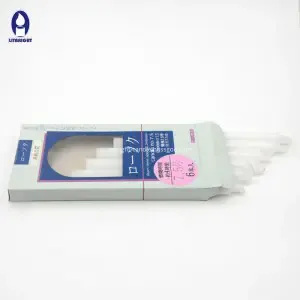Scented candles have been a staple in home décor and personal care for centuries. They not only enhance the ambiance of a space but also provide a range of benefits, from reducing stress to creating a relaxing atmosphere. In this article, we will delve into the various components of scented candles, including materials, waxes, fragrances, containers, and wicks. We will also cover the bulk manufacturing process, the quality control measures, and the certifications required in various regions around the world.
Wax is the backbone of any scented candle and determines its quality. The type of wax used can impact the candle’s burn time, fragrance throw, and overall appearance. There are various types of waxes used in scented candles, including:
Fragrances Another key component of scented candles are fragrance. Fragrances can be made from natural or synthetic sources and can be combined to create unique scents. The fragrance used in a candle can impact its scent throw, which refers to how far the scent travels from the candle.
Containers The container a candle is poured into can impact its overall appearance and use. Some popular options for scented candle containers include:
Wicks The wick of a candle is also important as it affects how the candle burns. Some common wick materials include cotton and hemp, which are both sustainable and biodegradable.
Manufacturing Scented Candles in Bulk The process of manufacturing scented candles in bulk can vary depending on the type of candle being produced. However, the general steps involved are as follows:
Quality and Certification.
Quality control is an important aspect of the scented candle industry. A high-quality candle not only provides a better sensory experience but is also a sign of a well-made and reliable product. There are several ways to check the quality of scented candles before they are sold to customers.
Certifications are also an important aspect of quality control in the scented candle industry. In regions such as the EU, USA, Middle East, Thailand, Singapore, and Malaysia, certifications such as the CE mark, RoHS, and REACH are required for scented candles. These certifications ensure that the candles are made of safe and non-toxic materials and that they meet specific quality standards.
In conclusion, quality control is a crucial aspect of the scented candle industry, and it involves a combination of visual inspections, performance tests, and certifications. A well-made and high-quality candle not only provides a better sensory experience but also assures customers of the product's reliability and safety.














 +8613838384866
+8613838384866 sales18@litbright.com(Aromatherapy)
sales18@litbright.com(Aromatherapy)